Rosemary Cultivation Guide:
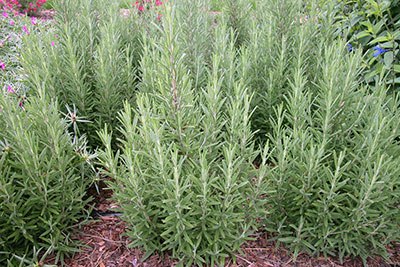
Introduction of Rosemary Cultivation:- Rosemary is a perennial evergreen shrub essential oil crop that may reach a height up to 3 meters. Rosemary belongs to the family of “Labiatae” and its scientific name is “Rosmarinus officinalis”. Rosemary can be grown all over the world. However, cool regions are best for its cultivation in India. Rosemary plant has woody trunk and linear leaves with highly aromatic. Rosemary is native to Mediterranean region. Rosemary has excellent medicinal properties and its oils are very popular. Oil glands are found in ventral side of the plant leaves. Rosemary even used in ayurvedic medicines. As herbal use is growing day by day, its cultivation has an excellent commercial value. Rosemary can be grown in pots, greenhouses, nursery beds and even in back yards. One can get decent profits with proper crop management practices and marketing strategies. Cultivars (varieties) for superior oil quality are the best choice for a commercial cultivation of rosemary. Stems, leaves and flowers are main parts used in rosemary plant for oil extraction. The oil of rosemary, distilled from the flowering tops, nearly all the commercial oil is distilled from the stem and leaves of the plant before it is in flower. There is a good international market for the rosemary oil.
Health Benefits of Rosemary:- The following are some of the health benefits of Rosemary.
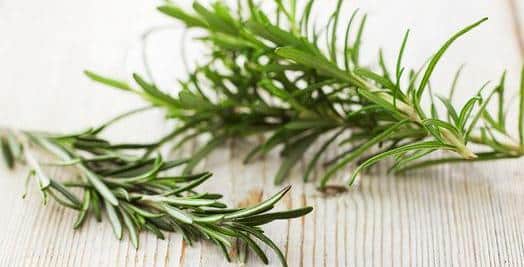
- Rosemary is a memory booster
- Rosemary helps relieving stress and improves mood.
- Rosemary helps boosting immune strength
- Rosemary helps in soothing stomach.
- Rosemary used as breath freshener.
- Rosemary helps in stimulating blood flow.
- Rosemary helps in relieving pain.
- Rosemary has anti-ageing properties; hence it is good for skin.
- Rosemary helps in flushing out body toxins.
- Rosemary has anti-inflammatory properties.
Local Names of Rosemary in India:- गुलमेंहदी (Hindi), Marikkolundu (Tamil), Poovaamkurunthal (Malayalam), એક બારમાસી સુગંધી ઝાડવું (Gujarati), Shatavari (Marathi). The other common names for the rosemary herb are Polar Plant, Compass-weed, Compass Plant, Rosmarinus coronarium and Dew of the Sea.
Rosemary Commercial Varieties:- There are many cultivars available across the globe. Contact your local horticulture department for suitable type tour area. Some of the international commercial varieties are; Benenden Blue, Flora Rosa, Tuscan Blue, Majorca Pink, Arp, Albiflorus, Huntington Carpet, McConnell’s Blue, Irene, Holly Hyde and Hill Hardy
Climate Required for Rosemary Cultivation:- Rosemary plant is a hardy and temperate that can tolerate frost very well. It thrives well at day temperatures of 20°C to 26°C. The rosemary plant is very adaptable and can be grown in almost all areas. Basically, rosemary can be grown under dry-land conditions. However, if it is cultivated under irrigated conditions, make sure the plants are not over irrigated. During initial planting stage, this crop requires irrigation and subsequent light irrigations should be given until the crop is well-established. After establishment with strong root system, this can yield very well if the annual rainfall is above 550 mm.
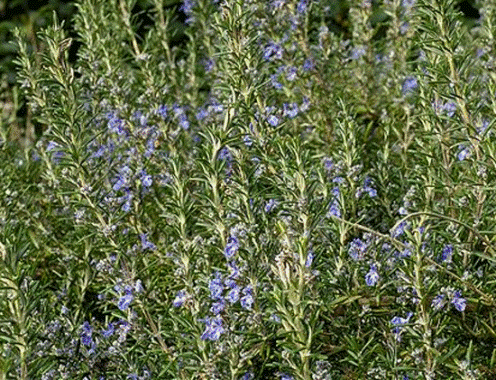
Soil Requirement for Rosemary Cultivation:- Rosemary plants thrive best in well-drained sandy loam soils. However, it can also be grown in clay loam soil which has less than 25 % of clay. The required soil pH for best yield is 5.5 to 8.9. It can’t tolerate the soils having heavy clay percentage (not more than 25%).
Land/Soil Preparation in Rosemary Cultivation:- If you are planning for commercial large scale cultivation, it is recommended to go for soil test from which soil health can be found. Full fill all the required nutrients according to the soil test results. Adding well-decomposed organic matter will result in good yield. Avoid waterlogged and heavy clay soils as these plants cannot tolerate. Prepare the land by giving 3 to 4 deep ploughings to get the soil to fine tilth stage. Remove any weeds from previous crops. Based on the type of cultivation, fertilizers should be planned. For organic crop growing, natural remedies should be adopted where as in-organic cultivation, appropriate chemical fertilizers should be applied in the soil.
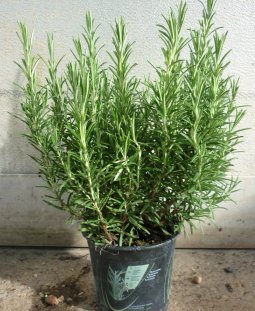
Propagation in Rosemary Cultivation:- Rosemary crop is propagated through seeds, cuttings and layering of roots.
- Seed propagation: This type of propagation is not recommended due to slow germination of rosemary seeds and growing true-to-type plants from seed is not a good practice as there is always a problem of cross pollination.
- Cutting Propagation: The best and efficient way to propagate rosemary plant is cuttings from growing stem tips. 12 to 15 cm length of cuttings should be collected and bottom 2/3 should be stripped from leaves then these cuttings ( 1/2 to 2/3 of length) should be inserted in a growing medium. Roots start farming after 3 to 4 weeks. For better root formation, a mist bed with a heated floor should be used.
- Layer Propagation: This type of propagation can be achieved in summer season by pegging of some of the lower branches under a sandy soil. The plants can be served from the parent plant once roots have been formed.
Plantation in Rosemary Cultivation:- Rosemary plants require full sun light so it is advised to have rows in east-west direction. When it comes to field spacing, beds of 1 to 2 meter and row space of 40 cm to 50 cm is more effective for machine cutting. Plants should be established at 25 cm to 50 cm within the rows so that the soil is covered quickly. When it comes to plant density, a total of 50,000 to 60,000 plants/ha is required. The rosemary cuttings can be prepared in the greenhouse or nursery and be transplanted to the main field in spring to midsummer.
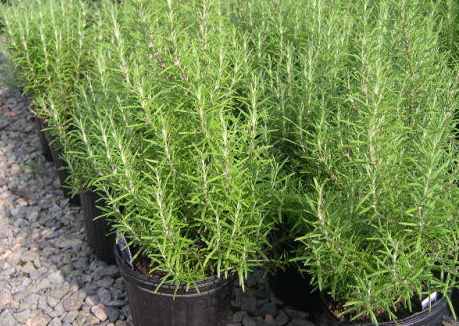
Irrigation in Rosemary Cultivation:- Usually, rosemary is grown in dry-lands. However, it requires irrigation until the roots are wee-established in the soil. Don’t allow the plants to dry out and at the same times they should not be over irrigated. If the annual rainfall is more than 450 mm. it does not require any irrigation. In rainy season, make sure the water will not stagnate in the field and should be drained out as early as possible.
Manures and Fertilizers in Rosemary Cultivation:- Manures and fertilizers should be applied according to result of soil test.
Weed Control in Rosemary Cultivation:- Weed control is very important in rosemary cultivation as it affects the quality and yield of essential oil. Hand weeding and hoeing should be carried out during the weed growth. Usually 3 to 4 weedings should be required during the year. Use hand hoe for inter-row cultivation. Care must be taken not to damage the root system . Effective rosemary plant density & canopy will check the weeds growth.
Pests and Diseases in Rosemary Cultivation:- The following are the pests and diseases found in Rosemary cultivation.
- Pests found in Rosemary Cultivation: This crop is vulnerable to spider mites, mealy bugs, whiteflies and thrips.
- Control Measures: Careful and thorough monitoring, crop rotation as well as applying insecticidal soap with lightweight horticultural oil will help to control these pests.
- Diseases Found in Rosemary Cultivation: Fungal problems, Powdery mildew and root rot are the common diseases found.
- Control Measures: Early detection and management of disease can prevent major problems in rosemary cultivation. Contact your local horticulture department for diseases identification and control measures.
Harvest in Rosemary Cultivation:- Rosemary crop can be harvested once or twice a year depending on whether it is cultivated for plant material or essential oil. Mechanical harvesting is preferred and a fist cutting can be done in the seeding year. However it should be delayed until 18 months after seeding. The yield would be more from re-growth of the crop. If the purpose of the crop is for essential oil, the highest quality, plants should be in bloom and only the flowering tops should be harvested for distillation purpose. For the fresh market, the rosemary herb should be harvested frequently at a young stage as young, fresh shoots are used in culinary preparations. Note that woody stems will lower the price. Fresh rosemary should be harvested early in the morning and kept cooled at 6°C before packaging for the market.
Post-Harvest in Rosemary Cultivation:– Rosemary should be dried at temperatures lower than 39°C to reduce loss of flavour of essential oil and to maintain a good green colour. After drying, the leaves should be separated from the stems and graded.
Yield in Rosemary Cultivation:- Yield depends on many factors like soil, cultivar (variety) climate and cultivation practices. On an average the yield of 30 to 80 kg of essential oil can be obtained. Dried leaves of 2000 to 2200 kg/ha can be expected.
Marketing in Rosemary Cultivation:- The market for essential oils in India is divided into local buyers and international (export) buyers. Usually the local buyers include marketing agents and chemical and pharmaceutical companies, as well as food and flavouring industries.
For Sheep and Goat Farming Information: Read here.
For Asia Agriculture : Read here.
Can you inform me about supply and demand of rosemary oil and is Nilgiris an ideal location for cultivating it.And also cost of cultivating per acre.Thankyou
How can I get sbsidy for cow farming bussiness.
we are one of major growers of rosemary plants and having oil distillation unit in uttarakhand Himalayas if you are looking for planting material or herbs or rosemary oil you can contact us
It is to Mitesh Ji from uttarakhanda
Sir mei rosemary ki kheti krne mei intrested hun please contact me
And rosemary essential oils pure 100℅ kiya aap l pass Availble hai
Can I get guidance for rosemary farming
It really facinates me.Could you please send me a full feasibility syudy made to cultivate rosmary in large farming.Thank you.
Can you provide the name of the nursery which sells Rosemary plant for my home.